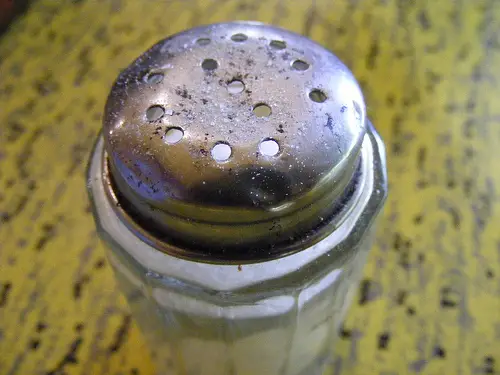
Have you ever thought much about money? Well…of course, we all think about it a good bit of the time. No matter what country you are from, there is some sort of currency at work. Everything we need costs a certain amount of money these days, whether it be a little or a lot.
Some folks see a different side of coins and currency. Others like myself are collectors of these investment items. I love the designs and history associated with coins and currency. Some of the designs are so intricate and beautiful. Some countries have some astonishing colors as well.
I live in the United States so my collection is mainly made up of U.S. coins and currency. When you enter the world of collectibles things bring on a whole new value, the face value no longer determines it’s worth. But that’s a whole other story completely. For today’s post I just want to focus on some of the history and interesting facts associated with United States coins and currency.
Coinage the Legacy Begins
The history of coins goes way back into the 17th century, during the time of the American colonies. During these times Britain had forbidden the colonies to produce their own coinage. But not everyone was quick to give up. The Massachusetts Bay Colony found a way to get around this so called coin ban. After the English Civil War, in 1652, they began minting their own coins, during a time when there was no monarchy.
They started minting these coins in 1652 and the coins kept that same date stamp for the next thirty years. This wasn’t because they didn’t want to change their dies however. They did this in hind sight, so they could claim that all the coins had been minted during a time without royal authority. Kind of their way of covering their behinds.
Fast forwarding to about 1787, the Continental Congress commissioned the first American coin. It was called the Fugio penny. What’s really cool about this coin, is that it was designed by Benjamin Franklin. The obverse had a depiction of the sun rising over a sundial with the motto “Mind Your Business” struck on it. I kind of like that motto, but it sounds a bit intense.
It wasn’t until 1864 that the motto “In God We Trust” appeared on U.S. coins. This new motto was created in hopes of boosting the country’s morale during the civil war. But the motto, strangely enough, didn’t appear on paper currency until 1957.
Paper Currency, Such a Light Weight Alternative
During the Civil War the government was looking for a way to fund the war efforts. So they came up with a plan to generate paper currency. So in 1861 the U.S. government issued the first paper currency, known as Greenbacks. I’m sure most of you have heard this term, but it’s not just a slang term, it was actually used by the government. Not only was this a brilliant way to fund the war, but it allowed you to carry a more substantial amount of money on your person. The greenbacks, although pretty large in size, were very light weight and you could fold up a wad of them and stick them in your pocket. Who doesn’t love a wad of money in their pocket!
The first paper money was created by the Bureau of Engraving and Printing. They were also responsible for the printing of many other certificate types. Everything from the one-fifth cent wine stamp to the $100 million International Monetary Fund special note. Today the Bureau goes through over eighteen tons of ink a day printing currency and various notes. That’s a lot of money! In fact, it’s said there is approximately $829 billion in circulation, two-thirds of that being outside the U.S. That’s actually quite a surprise knowing most of our money isn’t even in our own country.
You used to be able to redeem your currency for it’s value in gold or silver. Up until 1933 you could redeem what were called gold certificate bills for their value in gold. So if you had a $5 gold certificate you could redeem it for $5 in gold. They also minted silver certificate notes that you could redeem for their value in silver. These were minted up until 1957.
5 Interesting Currency Facts
- There were some silver certificate $1 bills minted between 1806-1891 that had a depiction of Martha Washington on the face of the bill. She is the only female ever to appear on the face of any U.S. currency.
- On the back of a U.S. $5 bill is an exact replica of the Lincoln Memorial. In fact if you look under magnification, you will see the names of 26 different states along the top of the memorial.
- The old car pictured on the back of a $10 bill is not a model-T Ford as some suspect. It is actually a car created from several different models that were around during that time period. This is a creative work of the bills designer.
- It is against federal law to burn any U.S. currency!
- For a dollar bill to tear from daily wear, it would have to be double folded four thousand times.
From Beginning to End
United States currency is not made from normal paper, it’s paper is more like a cloth than paper. There are actually tiny bits of ground-up old blue jeans woven into the paper. If you look closely you can see the little blue and red fibers running through it. Even though this is extremely strong and long lasting material, it does have a circulation life. According to the Federal Reserve each denomination has a specific life. The $1 bill is said to be 22 months, $5 bill is 16 months, $10 bill 18 months, $20 bill 2 years, $50 bill 5 years, and the $100 bill is 8 and a half years.
Once these bills have reached the end of their circulation life, they are slowly circulated back through the system, usually through banks etc., and are collected for destruction. They say approximately 75 million dollars of old money is shredded every day. The shredded material is used for insulation, roof shingles, fireplace logs and fertilizer, just to name a few.
There is so much to be learned from something as simple as the money of your country. These are usually things taken for granted simply because we see them and use them on a daily basis. But I thought this was an interesting subject and I hope you enjoyed learning about it. Be sure to leave me some comments and let me know what you thought about the post and allow me to learn more by leaving additional information you may have pertaining to the discussion.



This is a great breakdown of an important patent in the local space Bill. Thanks for distilling this.
GREAT SHARE ON MONEY YOU SEEM VERY KNOWLEDGEABLE IN THIS VERY NICE
Oh yes, I love coins and currency, I’ve been collecting for many many years. My Grandfather got me started on it when he was alive. It’s a great hobby to get your kids started on and will become an investment as they get older.
It is interesting that from 1774 through 2009 the U.S. dollar has lost about 96.4% of its buying power.
Yah, it’s very sad that our dollar isn’t really worth a dollar anymore. It’s value has really decreased over the years.
nice article. keep it up.
US dollar is still the only world currency. If it continues to loose it’s power, china would replace it with yen which will be disaster for many economies around the world.
That’s a very scary thought. But the way the economy is going, it wouldn’t surprise me if something crazy like that happened.